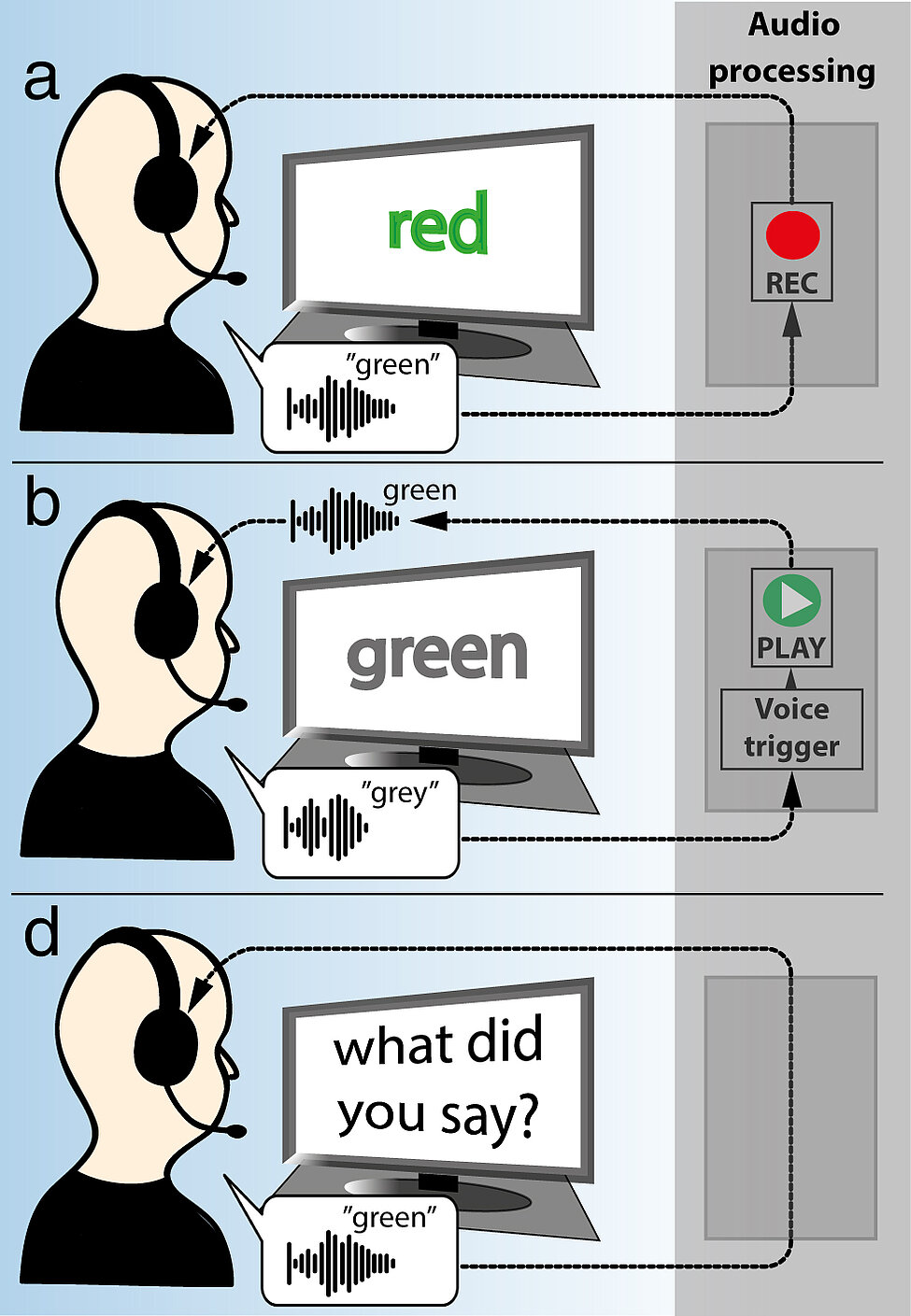Andreas Lind and collaborators at Lund University have published two articles featuring a novel method called Real-time Speech Exchange, which allow them to study how auditory feedback is used by speakers to help specify the meaning of what they themselves are saying, and how feedback interacts with the sense of agency during language production.
[caption id="attachment_5100" align="alignright" width="207" caption="Real-time Speech Exchange Procedure"]http://www.lucs.lu.se/wp-content/uploads/2014/04/LindFig1.jpg[/caption]
Speech is usually assumed to start with a clearly defined preverbal message, which provides a benchmark for self-monitoring and a robust senseof agency for one’s utterances. However, an alternative hypothesis states that speakers often have no detailed preview of what they are about to say, and that they instead use auditory feedback to infer the meaning of their words. In the experiment reported here, participants performed a Stroop color-naming task while we covertly manipulated their auditory feedback in real time so that they said one thing but heard themselves saying something else. Under ideal timing conditions, two thirds of these semantic exchanges went undetected by the participants, and in 85% of all nondetected exchanges, the inserted words were experienced as self-produced. These findings indicate that the sense of agency for speech has a strong inferential component, and that auditory feedback of one’s own voice acts as a pathway for semantic monitoring, potentially overriding other feedback loops.Introducting Real-time Speech Exchange
By 6 -
Published 30 April 2014

Andreas Lind and collaborators at Lund University have published two articles featuring a novel method called Real-time Speech Exchange, which allow them to study how auditory feedback is used by speakers to help specify the meaning of what they themselves are saying, and how feedback interacts with the sense of agency during language production.
2024-10-20
Peter Gärdenfors receives the Jean Nicod Prize 2025 (The Institut Jean Nicod)
2024-10-18
LU-informationsvideo med Jana Holsanova: "Samverkan för bättre syntolkning"
2024-10-03
Peter Gärdenfors at The University of Liverpool Evolutionary Anthropology Webinar Talk
2024-10-01
Epi (LUCS Robotics) performing as "the emotional support karaoke bot" at Malmö Gallery Weekend 2024.
2024-09-26
3 x LUCS på Bokmässan 2024 i Göteborg, 26–29 september.
